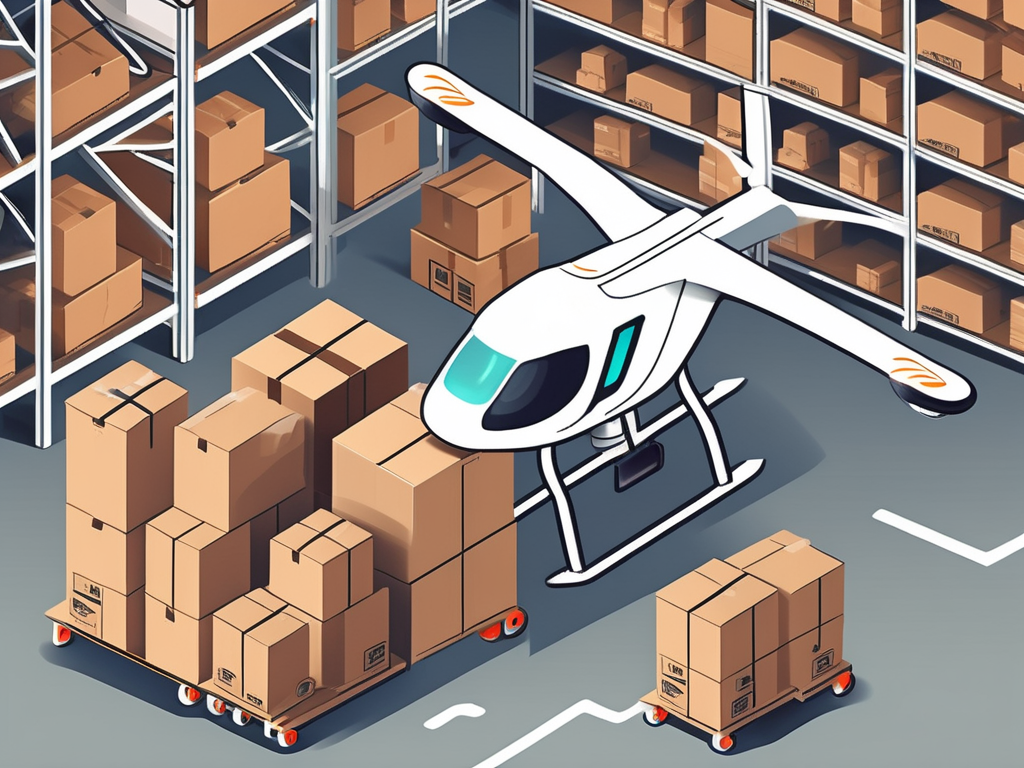In today’s digital age, starting an online business has become more accessible than ever before. One popular business model that requires minimal upfront investment is dropshipping. By leveraging this method, entrepreneurs can sell products without ever having to handle inventory or worry about shipping. In this article, we will explore the basics of dropshipping and guide you on how to start your own dropshipping business with no money.
Understanding the Basics of Dropshipping
What is Dropshipping?
Dropshipping is a retail fulfillment method where a store owner doesn’t hold any inventory but instead transfers customer orders and shipment details to the manufacturer or another retailer. The products are then shipped directly to the customer.

Benefits of a Dropshipping Business
There are several advantages to starting a dropshipping business:
- No upfront inventory costs: Unlike traditional retail models, dropshipping eliminates the need to invest in inventory upfront. You only purchase the products when a customer places an order.
- Low risk: With no inventory to manage, you avoid the risk of purchasing products that may not sell. You can test multiple products and niches without significant financial implications.
- Flexible location: Since you don’t need to physically handle inventory, you can operate your dropshipping business from anywhere with an internet connection.
Another benefit of dropshipping is the ability to offer a wide range of products to your customers. With traditional retail models, you would need to invest in a large inventory to provide variety. However, with dropshipping, you can easily add new products to your online store without any additional cost or storage concerns. This allows you to cater to different customer preferences and stay ahead of the competition.
Furthermore, dropshipping offers a great opportunity for entrepreneurs to enter the e-commerce industry with minimal barriers. Starting a traditional retail business can be daunting and expensive, requiring significant upfront investment in inventory, storage space, and physical storefronts. In contrast, dropshipping allows you to start a business with minimal capital and overhead costs. This means that even if you are just starting out or have limited resources, you can still establish a successful online store and grow your business gradually.
Preparing for Your Dropshipping Business
Identifying Your Niche
One of the crucial steps in starting a successful dropshipping business is finding a niche. A niche is a specialized segment of the market that targets a specific group of customers. Research various niches and identify one that aligns with your interests and has the potential for profitability. Consider factors such as market demand, competition, and product availability within your chosen niche.
When choosing a niche, it’s important to think about your own passions and interests. By selecting a niche that you are genuinely interested in, you will have a greater understanding of the market and be more motivated to put in the effort required for success. For example, if you are passionate about fitness and wellness, you might consider a niche that focuses on eco-friendly workout gear or organic supplements.
Market Research and Competition Analysis
Once you have identified your niche, conduct thorough market research. Understand customer preferences, trends, and purchasing behavior within your chosen market segment. Additionally, analyze your competitors to gain insights into their pricing strategies, product offerings, and target audience. This analysis will help you differentiate your business and identify potential gaps in the market that you can leverage.
Market research involves diving deep into the needs and desires of your target customers. By understanding their pain points and aspirations, you can tailor your product offerings and marketing messages to resonate with them on a deeper level. For example, if your niche is pet products, you might discover that pet owners are increasingly concerned about the environmental impact of pet food. Armed with this knowledge, you can source and promote eco-friendly pet food options that cater to this growing demand.
Competition analysis is equally important in order to position your business effectively. By studying your competitors, you can identify areas where you can differentiate yourself and offer unique value to customers. For instance, if you find that your competitors are primarily focused on low prices, you could differentiate your business by offering personalized customer service or exclusive product bundles.
Setting Up Your Dropshipping Business Without Capital
Choosing the Right Dropshipping Supplier
When starting a dropshipping business, selecting the right supplier is crucial. Look for suppliers that offer a wide range of quality products, reliable shipping methods, and competitive pricing. Ensure they have a good track record of fulfilling orders promptly and providing excellent customer service. Research and compare different suppliers before making a final decision.

Moreover, it is essential to consider the location of your dropshipping supplier. Opting for a supplier closer to your target market can reduce shipping costs and delivery times. This can lead to increased customer satisfaction and repeat business. Additionally, working with local suppliers may also enable you to establish stronger relationships and potentially negotiate better terms.
Building a Website on a Budget
An essential part of your dropshipping business is a well-designed website that showcases your products and provides a seamless shopping experience. Luckily, there are several cost-effective options for building a professional website. You can use website builders like WordPress, Shopify, or Wix to create your online store. Take advantage of free or minimal-cost templates, plugins, and themes to customize your website’s look and functionality.
Furthermore, when building your website, it’s important to optimize it for search engines. Implementing search engine optimization (SEO) techniques can help your website rank higher in search results, driving more organic traffic to your store. Research keywords relevant to your niche and incorporate them strategically into your website’s content, meta tags, and URLs. Additionally, focus on creating high-quality, informative product descriptions and engaging blog posts to attract and retain customers.
Marketing Your Dropshipping Business
Utilizing Social Media for Promotion
Social media platforms provide an excellent opportunity to reach your target audience and promote your dropshipping business without spending a fortune. Create captivating social media profiles on platforms such as Facebook, Instagram, and Pinterest. Regularly post engaging content, product updates, and offers. Interact with your followers, respond to comments, and build a community around your brand.
When it comes to social media, it’s not just about posting content and hoping for the best. To truly harness the power of these platforms, you need to understand your audience and tailor your content to their interests. Conduct thorough market research to identify the demographics, preferences, and behaviors of your target customers. This will help you create content that resonates with them and increases the likelihood of engagement.
Additionally, don’t limit yourself to just posting on your own social media profiles. Collaborate with influencers and micro-influencers in your niche to expand your reach. Influencer marketing can be a highly effective strategy for reaching a wider audience and building trust with potential customers. Choose influencers whose values align with your brand and whose followers match your target market.
SEO Strategies for Dropshipping Businesses
Search Engine Optimization (SEO) plays a vital role in driving organic traffic to your dropshipping website. Optimize your product descriptions, meta tags, and website structure to improve your search engine rankings. Research relevant keywords and incorporate them naturally into your content. Engage in link-building activities to boost your website’s authority and visibility in search results.
However, SEO is not a one-time effort. It requires continuous monitoring and optimization to stay ahead of the competition. Regularly analyze your website’s performance using tools like Google Analytics and Search Console. Identify areas for improvement, such as slow-loading pages or high bounce rates, and take steps to address them. Keep up with the latest SEO trends and algorithm updates to ensure your website remains optimized for search engines.
Another effective SEO strategy for dropshipping businesses is to create high-quality, informative content that provides value to your target audience. This can include blog posts, guides, and tutorials related to your products or industry. By offering valuable information, you not only attract potential customers but also establish yourself as an authority in your niche. This can lead to increased brand visibility and customer trust, ultimately driving more traffic to your website.
Managing Your Dropshipping Business
Customer Service in Dropshipping
Providing excellent customer service is crucial for the success of your dropshipping business. Respond promptly to customer inquiries and address any concerns or issues they may have. Offer clear communication and transparent policies regarding shipping, returns, and refunds. Building strong relationships with your customers will encourage repeat purchases and positive reviews.

When it comes to customer service in dropshipping, going the extra mile can make all the difference. Consider implementing personalized touches, such as handwritten thank-you notes or small surprise gifts with each order. These gestures can leave a lasting impression on your customers, making them feel valued and appreciated. Additionally, providing detailed product descriptions and high-quality images can help customers make informed purchasing decisions, reducing the likelihood of returns or dissatisfaction.
Handling Returns and Refunds
While every effort should be made to avoid returns and refunds, they are an inevitable part of running a dropshipping business. Establish clear policies for returns and refunds, and communicate them effectively on your website. Work closely with your suppliers to ensure smooth returns and reimbursements. Focus on resolving customer issues promptly to maintain a positive reputation.
When it comes to handling returns and refunds, it’s important to approach each situation with empathy and understanding. Put yourself in your customer’s shoes and strive to find a solution that leaves them satisfied. Offering alternative products, store credits, or even partial refunds can help turn a potentially negative experience into a positive one. Remember, word-of-mouth travels fast in the online world, and a customer who feels well taken care of is more likely to recommend your business to others.
Starting a dropshipping business with no money may seem daunting, but with careful planning and execution, it is entirely possible. By following the steps outlined in this article, you can establish a successful online business that allows you to leverage the benefits of dropshipping without the need for significant upfront capital.
However, it’s important to note that success in dropshipping doesn’t happen overnight. It requires dedication, perseverance, and continuous learning. Stay updated with the latest industry trends, explore new marketing strategies, and constantly evaluate and optimize your business processes. By staying proactive and adaptable, you can position your dropshipping business for long-term success in the ever-evolving e-commerce landscape.


